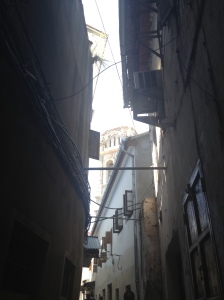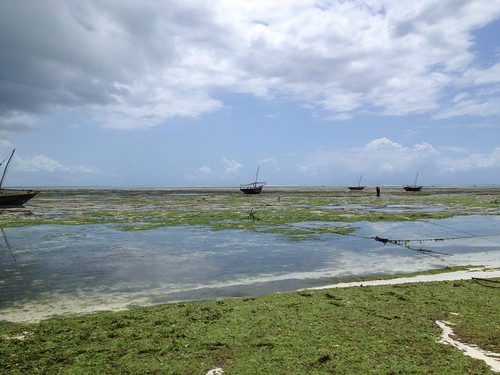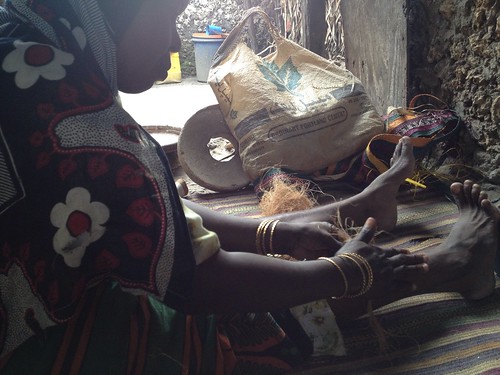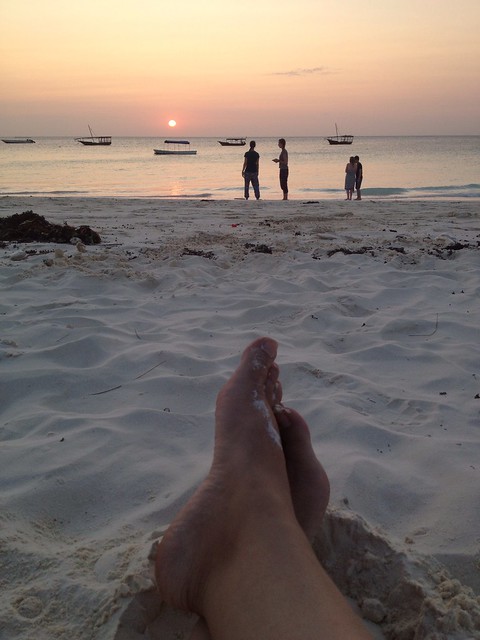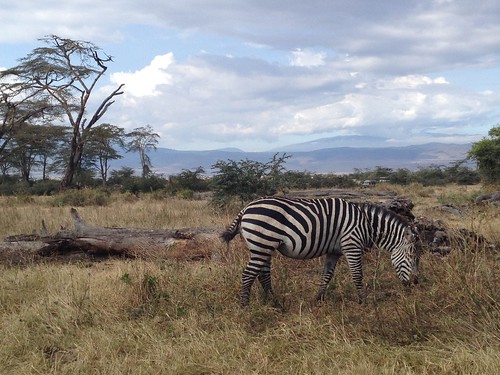
A zebra in the Ngorongoro Crater.
Safari is the Swahili word for a trip or journey. In English, I believe it means getting driven around a national park or game reserve in Africa and taking a lot of pictures.
I arrived in Arusha, Tanzania, about two weeks ago with one main goal in mind: to book myself a budget safari and take in some of the parks of northern Tanzania. Luckily for me, the safari industry is really well established in Arusha – to the point where as soon as you get there everyone you meet starts asking you: have you been on a safari, yet? are you going on a safari? have you booked your safari? So it was just a matter of calling up a company that the guy at the front desk of my hotel said had come by looking for people to join a group, and I little while later I had chosen a package and was at an ATM withdrawing a million shillings (which, to be fair, is only about $600 – it’s much easier to become a Tsh millionaire than a CFA millionaire).
My safari was a three day trip (two nights) to see the Ngorongoro Crater, Tarangire National Park, and Lake Manyara National Park, which are all within a few hours of Arusha.
The Ngorongoro Crater was perhaps most notable for the stunning landscape it presented. We probably saw more wildlife in both of the other parks that we visited, but each one offered up a slightly different variety of animals and often very different scenery.
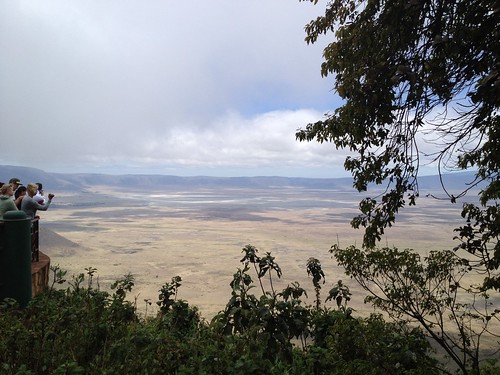
The view from the edge of the Ngonongoro Crater.
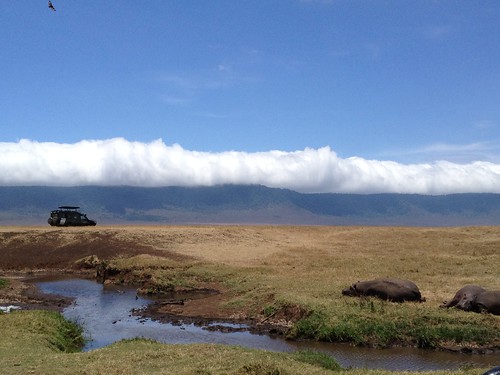
A safari vehicle drives by some hippos in the Ngorongoro Crater.
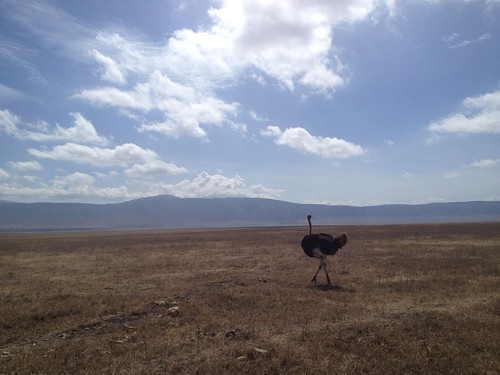
An ostrich strolling across the crater floor.
In Tarangire National Park, one of the highlights of the day ended up being watching a lion stalk and ultimately kill a wildebeest. It was kind of far from our vehicle (and unlike everyone else with their telescoping lenses, I just had my iphone), and the actual chase happened really quickly, so I didn’t really bother with pictures.
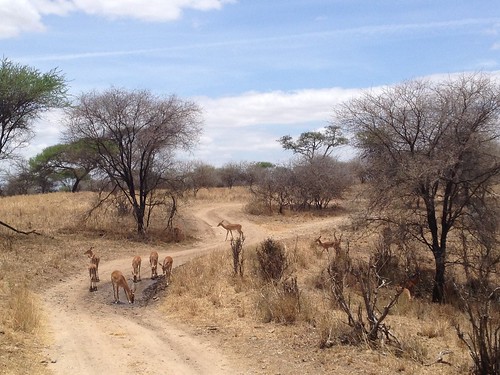
Impalas in the road in Tarangire.

A family of elephants huddling in the shade.

Mama and baby monkey at our lunch site.
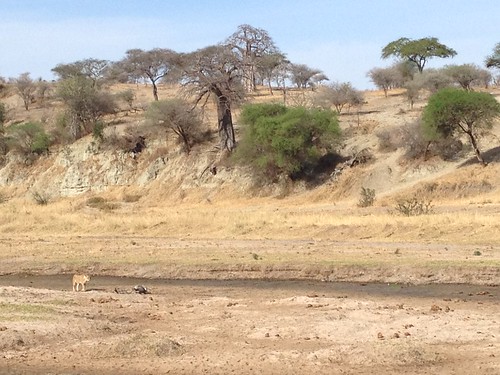
The lion coming back to her kill.
Lake Manyara was mostly about seeing different types of birds. The park also featured lots of trees, though, and therefore plenty of giraffes.

Giraffes in Lake Manyara National Park.
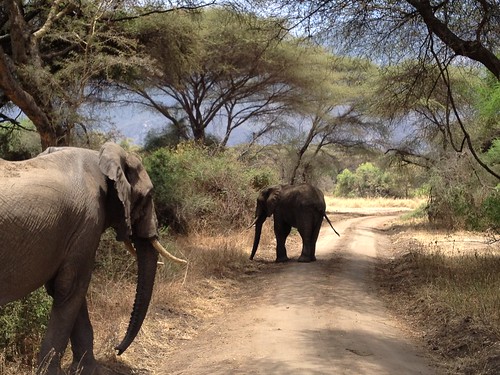
A couple of elephants walking by.

Lake Manyara itself.
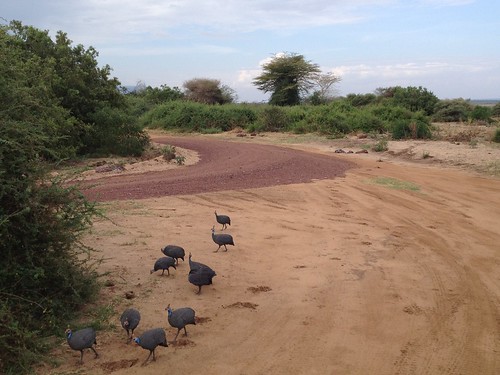
Guinea fowl by the side of the road.
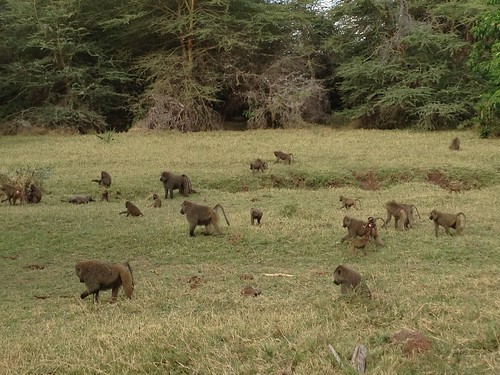
And baboons. Our guide rolled his eyes at me when everyone else in the vehicle wanted to stop and take pictures of these.
If that’s not enough pictures, there are even more at my Flickr photostream.

